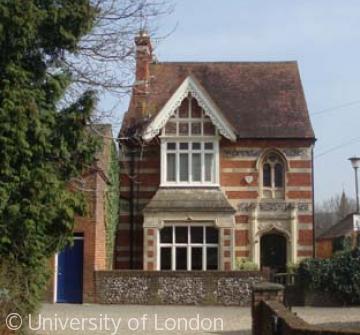Church Street and Holy Trinity Church

Church Street is a pleasant secluded lane running southwards from Greys Road to Vicarage Road, past the 19th-century church of Holy Trinity which gives it its name (see map). It began as an access lane for agricultural land, but was already starting to be built up even before the church was erected in 1848. Greys Road and Greys Hill had become prime areas for suburban development in the 1820s and 1830s, both for cottage accommodation and middle-class housing, and the Rotherfield Greys tithe map of 1844 shows a concentration of houses in the area. Church Street (as yet unnamed) was no exception, with several small houses or cottages along its east side, and at least one on the west.
The rector of Rotherfield Greys nicknamed the 'vast accumulation of low houses' in the Greys Hill area the 'Blue Mountains', and it was to serve these burgeoning suburbs that Holy Trinity church was built in 1847-8. The area was still part of Rotherfield Greys parish, and so remained until 1894, but the new church had its own district chapelry which ran from Greys Road and Friday Street down to Newtown and the boundary with Rotherfield Peppard. From the outset it had its own perpetual curate or vicar, for whom a new vicarage house was built just south of the church at the same time. The first curate, W.P. Pinckney, was living there in 1861 with his wife and 11-year-old son, along with three live-in servants (a cook and two housemaids). A nearby Church infant school was opened on Greys Hill around 1850, and a larger National School was built to the west of the church in 1893. While many of the new 19th-century suburbs catered for well-off middle class incomers, Church Street remained a lane of relatively humble cottage dwellings, interspersed with a few larger houses such as No. 31 (red brick and three-storeyed) near the church. In 1861 heads of household included a painter and glazier, a dressmaker, a tailor, a mason, carpenters, and a cabinet maker. The picture was little different forty years later (1901), when occupants included carpenters, a plumber, a brick and tile layer, and a harness maker, alongside a coachman, a publican (at No. 2), and a woman living on private means. The unmarried curate (Francis Stokes) still had 3 servants at the vicarage, but otherwise lived alone, save for a visiting clergyman friend recorded there on census day. Read the censuses for Church Street (see Assets opposite). .
Content generated during research for the paperback book 'Henley-on-Thames: Town, Trade and River' (ISBN 13 : 978-1-86077-554-3) for the England's Past for Everyone series






